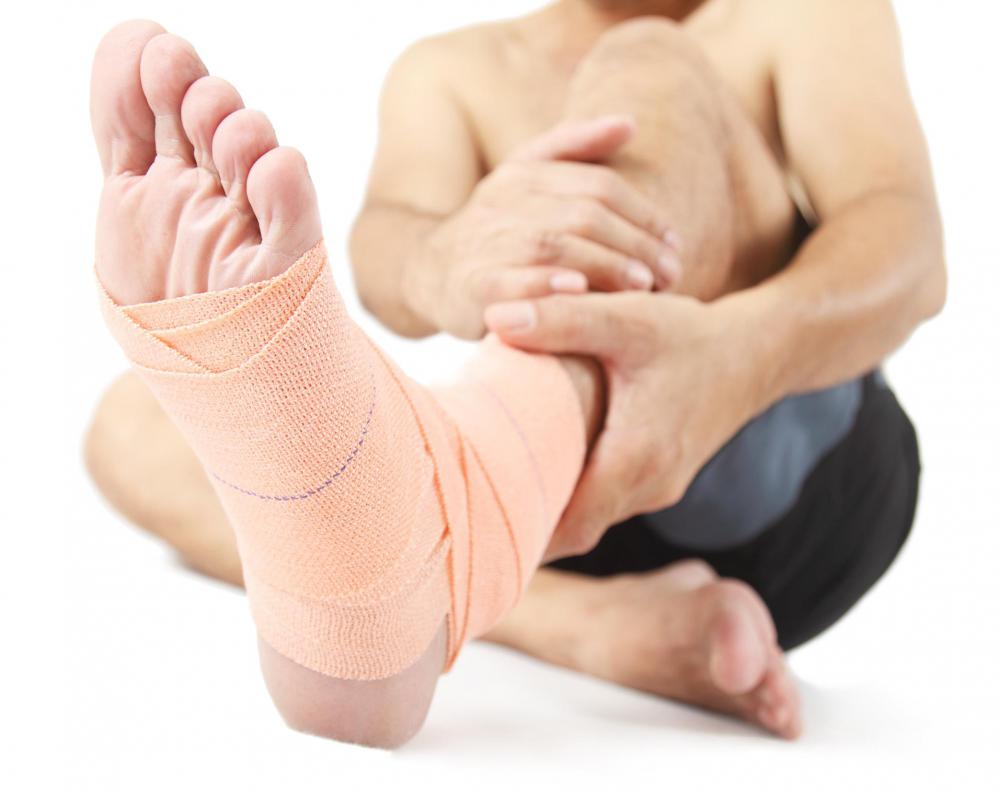At TheHealthBoard, we're committed to delivering accurate, trustworthy information. Our expert-authored content is rigorously fact-checked and sourced from credible authorities. Discover how we uphold the highest standards in providing you with reliable knowledge.
What is the Midfoot?
The midfoot refers to the section of the foot in front of the ankle referred to as the arch and includes five articulating bones of the tarsus: the cuboid bone, the navicular bone, and three cuneiform bones. It may also refer to any muscles that attach along these irregularly shaped bones, the tendons and ligaments connecting these structures, and the joints between the bones. Additionally, midfoot is often used to collectively refer to all of these structures when describing an injury to the region.
Of these structures, however, the bones are considered the most significant, as they are responsible for absorbing shock during standing, walking, and running movements. These five tightly bunched bones are situated between the metatarsals, a row of long bones just anterior to the midfoot, and the talus and calcaneus, which are the two remaining bones of the tarsus. Both found in the hindfoot, the talus makes up the lower portion of the ankle joint, and the calcaneus is better known as the heel bone. All irregular in shape like rocks, each of the five bones in the midfoot articulates with four to six other bones.

Several kinds of joints are found here, including those between the tarsal bones, which fit together like puzzle pieces, and those between the tarsals and the metatarsals. All but the navicular bone articulate with the metatarsals. These arthrodial joints, which permit only minor gliding movements as the arch of the foot spreads, are known as the tarsometatarsal joints.

At the back of the midfoot are the talonavicular and calcaneocuboid joints, together known as the transverse tarsal joint. The movements allowed here include flexion and extension, or the bending and straightening of the foot, and inversion and eversion, which are the turning in and turning out of the sole of the foot, respectively. In addition, there are numerous articulations between and among all of these bones, all of which are arthrodial joints that permit little movement and that are held together by several ligaments apiece.

Only two major muscles attach to any of the five bones of the midfoot: the tibialis anterior and tibialis posterior. Both are extrinsic muscles of the foot, meaning that the body of the muscle is situated outside of the foot in the lower leg and that their tendons penetrate the foot to insert along the bones. The tibialis anterior, found in the shin, attaches to the medial cuneiform, which is the one closest to the inside of the foot in line with the big toe. It produces inversion of the foot. The tibialis posterior, found deep in the calf, attaches to both the medial cuneiform and the navicular on the inside of the foot and also contributes to inversion.
AS FEATURED ON:
AS FEATURED ON:

















Discuss this Article
Post your comments